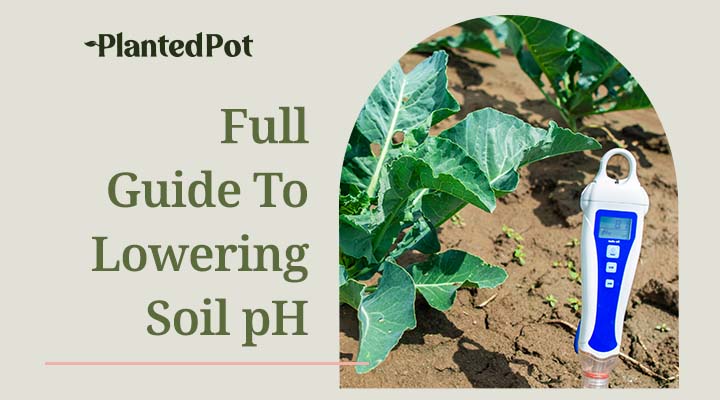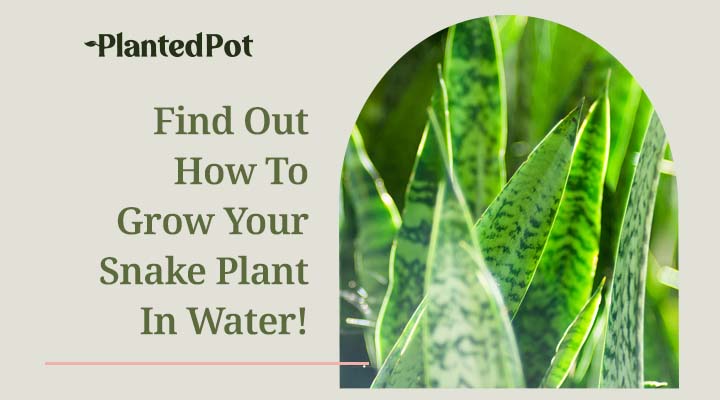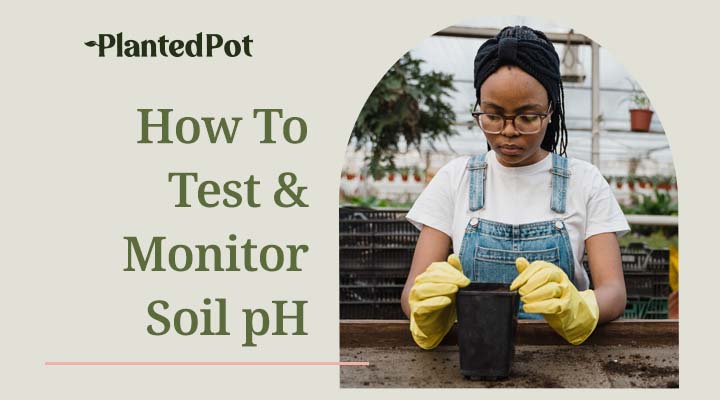
How to Repot a Plant: Complete Step-by-Step Guide
Home / How to Repot a Plant: Complete Step-by-Step Guide
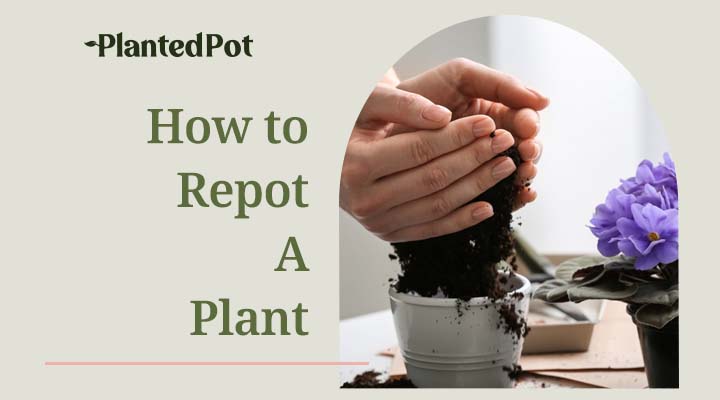
How to Repot a Plant: Complete Step-by-Step Guide
- Rogelio Alvarez
- May 12, 2021
- 5:08 pm
- No Comments
Nothing makes a room or outside patio more lively than a couple of plants. With their vibrant leaves and wide range of colors, plants can turn a place from boring to the center of attention. After a while, you may notice that your plant has outgrown its pot, leaving you wondering how to repot a plant without accidentally killing it.
Repotting your plant is an essential part of plant care. It will allow your plant to continue to grow and flourish. It also gives you the option of changing up the pot to better match the surrounding plant decor.
Whether you have a few low maintenance indoor plants or a full-blown out garden, repotting gives your plants a change of environment. Repotting a plant might seem like a challenging task, but it is pretty simple to do with just a few steps. Both you and your plant will feel satisfied after it is successfully repotted.
Why Do People Repot Plants?
It was common for you to outgrow your shoes as a kid. All you needed to do was get a slightly bigger shoe size, and you were all set! Plants are very similar; they will eventually outgrow and require a new pot. Your plant also needs new soil to continue to grow and thrive.
If you notice your plant’s root growing out of a drainage hole, it is time to repot your plant. Another sign that it is time you repot your plants is when the roots are more visible in the soil, possibly extruding above the surface. Repotting your plants helps maintain its health and can prevent it from drying out.
Most plants absorb nutrients through the soil. Soil can become dry and might require more frequent watering if your plant is not repotted. New potting soil will keep your plant healthy by providing it with fresh nutrients.
Some plants require repotting once a year while others, like some house plants, can be repotted every few years. A root-bound plant (one whose roots take up all the space in the pot) will benefit from a new pot and should be repotted ASAP. Some roots will grow and make the plant rise above the pot. This could make it top-heavy and cause your plant to fall on its side.
What Are the Benefits of Repotting Plants?
Repotting your plant provides the root system with more air, gives the plant more room to grow, and refreshes the soil. All of these benefits reduce the chance of the plant developing a disease.
When it comes to repotting plants, there are way more benefits than drawbacks. Although some plants experience a temporary shock from repotting, they get a fresh start and more advantages that benefit them in the long run. Here are the perks:
- Fertile Soil: As plants begin to outgrow the pot, the soil it is in will contain fewer nutrients. Repotting a plant allows it access to fresh potting soil and nutrients that keep it healthy. Plants require fresh water and sun to survive, but providing them with fresh soil will help them prosper for a very long time. New potting mix in the pot will give your plant plenty of nourishment.
- Fewer Pests: Repotting plants also allows you to inspect the roots for any unwanted insects that can be damaging your plant.
- More Air: Repotting allows your houseplant to receive fresh air to its roots better. When there is more air circulation at the roots, the likelihood of mold or bacteria taking over the plant decreases.
- Enhanced Growth: Once the plant is root bound, it may experience slower growth. A root bound plant might have waterlogged soil, which can damage the plant. Repotting your plants helps loosen the roots, giving them more freedom to grow healthy.
- Healthy Reproduction: A healthy plant will also make propagation, or plant breeding, a lot smoother. It makes more sense to plant the bud of the parent plant in fresh soil than keep it in the same soil and hinder its chances of survival.
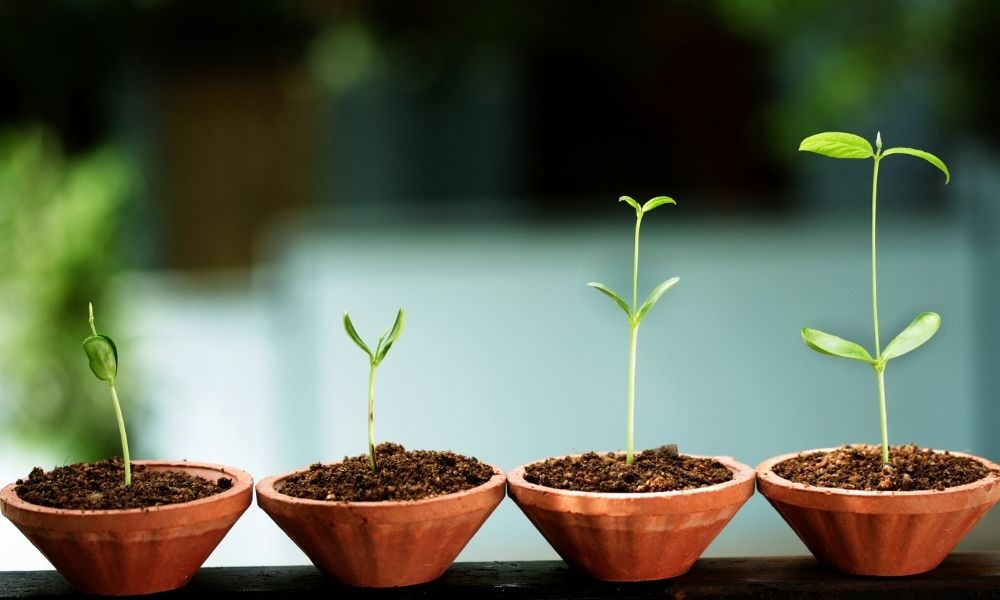
Is It Necessary to Repot a Plant?
It is necessary to repot your plants. If you do not repot a plant, it is far more likely to dry out faster, become susceptible to disease or damage.
How often you repot your plants can depend on how fast they’re growing. Some plants grow slower than others and are fine in their current planter but can benefit from new potting soil to keep them healthy.
So you identified a couple of plants that need new homes and are wondering, when is the best time to repot a plant? Usually, it’s best to repot during the springtime, so the plant gets plenty of light to grow. Plants tend to stay dormant during winter, so springtime is the best time of year to repot a plant.
It is also recommended to repot a plant after recently purchasing it. If purchased during winter, make sure to repot your plant in a warm environment to prevent possible damage.
What Do You Need to Repot a Plant?
Before you start the plant repotting process, make sure you have the right tools to get the job done. The list of items needed to repot a plant is easy to find almost anywhere. You can purchase these items in-store and online, depending on your budget.
(Slightly) Larger Pot
Your next pots should be just a few inches bigger. Make sure it has drainage holes so that excess water can properly drain. If your pot does not have drainage holes, add a layer of small pebbles to prevent your roots from staying soaked in water. The new pot can be plastic or terracotta (though terracotta is the preference of plants everywhere!).
Potting Mix
Your plant’s roots will appreciate new soil. The type of potting mix required depends on the type of plant you have. Before purchasing potting soil, research the type of soil your specific plant might need.
Trowel
You probably have seen a trowel before. It resembles a miniature shovel and comes in handy when trying to remove your plant from its current pot.
Scissors
You can go out and find gardening-specific scissors, but any regular house scissors are fine. You can use scissors to cut off dead roots or loosen up tangled roots growing out drainage hole on the bottom of the planter.
Gloves (optional)
Some people like getting their hands dirty and the feel of dirt; some prefer staying clean. Use gloves if you recently got a manicure and want to prevent damage to your nails.
How to Repot a Plant
You went out and bought all the necessary items. You finally decided on a new planter that will compliment your backyard patio furniture, but the big question remains. How do I repot my plant?
- Gently squeeze the plastic pot on the side or place it on its side and tap at it with your trowel. This will loosen up your plant and make it easier to remove. You can also insert the trowel to gently loosen it up more.
- Remove the plant from the pot. Be careful not to use excessive force when pulling it out, or you can damage your plant. Once it is removed, give it a nice shake and inspect the roots to see if any are rotten or tangled up. Cut damaged roots with sharp scissors.
- Grab the fresh potting soil and layer it at the bottom of the new pot. Some gardening experts recommend adding a coffee filter first to prevent the soil from leaking from the bottom of the pot. Use the trowel or hand to press down on the soil and remove potential air bubbles.
- Pack enough new soil to allow the roots enough room to grow. There is nothing wrong with mixing the fresh potting soil with the old potting soil from the previous pot. Gently add your plant to the center of the pot, add a layer of fresh soil and allow enough space for growth.
- Plants love water. Make sure to water your plant thoroughly. When you see water seeping out of the drainage hole in the bottom of the pot, stop watering.
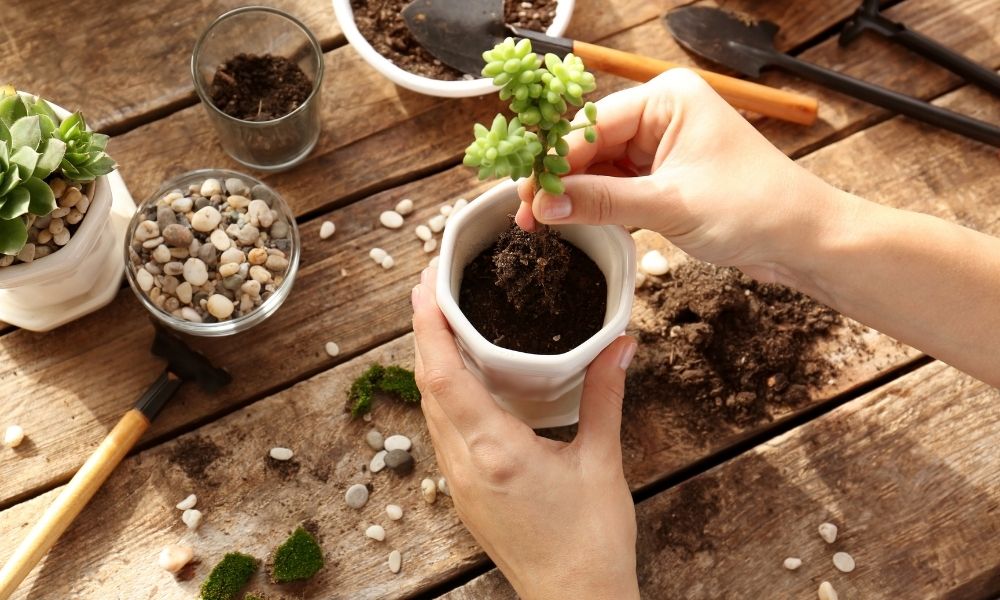
How to Repot a Plant with Root Rot
A plant with root rot will eventually die if neglected. It is a fungal plant disease that will cause the roots to decay. Roots affected by these fungi are discolored and can be visually identified.
If you are wondering how to repot a plant with root rot, then follow these simple steps.
- Tap the bottom of the pot to loosen up the plant and remove it.
- Take a good look at your plant’s root system and try to remove as much soil as possible.
- Use your scissors and clip away at affected roots. Use alcohol wipes to sterilize the scissors and stop the fungi from spreading.
- To avoid relapse, you might need to repot your plant in a new pot with fresh soil.
Your plant should survive, but sometimes the damage is irreversible. You can avoid root rot by not overwatering your plant.
Can Plants Die From Repotting?
Yes, in some unfortunate cases, plants die from repotting. If you forget to water your plant after it is repotted it can die from neglect.
Transplant shock is a condition where plants may become stressed during this process, especially in cold weather or the middle of a heatwave. A plant with withered leaves after repotting is usually a sign of transplant shock. If ignored, your plant may die. But you can save it if you water it thoroughly.
Final Thoughts
This guide should help you feel more prepared to repot your plant. The more you do it, the better you will get it, especially if you own many houseplants or maintain an outside garden.
Caring for our plants is easy enough if you are patient. Take time to know your plant, and if you are looking to increase your plant family, take a look at the beautiful selection of plants from PlantedPot.


